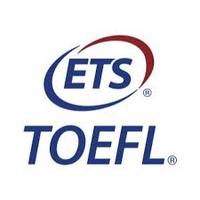Pearson | PTE
Register now for PTE & Unlock 20% OFF : Use promo code: 'C360SPL20'. Valid till 15th NOV'24! Trusted by 3,500+ universities globally
KIITEE 2024 - The Kalinga Institute of Industrial Technology has declared the KIITEE 2024 phase 3 result on July 9. The KIITEE phase 3 counselling 2024 has been started on July 9, at kiitee.kiit.ac.in. Students can apply for KIITEE phase 3 counselling 2024 till July 11. The university will publish the KIITEE phase 3 seat allotment 2024 on July 16. The KIITEE 2024 phase 3 admit card was issued on July 2. Applicants can download the KIITEE phase 3 admit card 2024 by using their login credentials. The KIITEE phase 3 exam was held from July 3 to 5.
The university has started the KIITEE phase 3 slot booking 2024 on June 30. The university has declared the KIITEE 2024 phase 2 allotment result on June 25, at kiitee.kiit.ac.in. Students can check KIITEE result 2024 for phase 2 by entering their application number, date of birth and security code. Candidates can check the KIITEE result 2024 by entering their details such as application number, date of birth and captcha. The login credentials are required to download the KIITEE 2024 admit card are application number and date of birth. Candidates appearing for the KIITEE exam are advised to go through the KIITEE exam pattern 2024 for their preparations Before applying for KIITEE 2024, candidates are advised to check the eligibility criteria laid down by the KIIT.
Only those candidates who fulfill the eligibility criteria will be considered eligible to appear in the KIITEE 2024 exam. The admission to MBBS programme will not be done on the basis of the KIITEE 2024 examination. The institute will release the KIITEE cut off 2024 based on the candidate's performance in the entrance exam. Candidates who secure the KIITEE 2024 cut off marks will have to participate in the counselling process. They have to carry the original documents and visit the KIITEE counselling venue for claiming their admissions.
Full form of KITEE exam is the Kalinga Institute of Industrial Technology Entrance Examination conducted by the Kalinga Institute of Industrial Technology (KIIT). It is a common entrance test which provides admission at KIIT at various courses such as B.Tech, BBA, B.Sc, Law, MCA etc. Candidates appearing for KIITEE exam 2024 must go through the KIITEE syllabus and KITEE exam pattern and prepare a meticulous study plan to crack the KIITEE exam.
Based on the scored marks of the candidates in KIITEE 2024 exam, separate merit lists will be released for all courses. KIITEE admission 2024 will be offered based on counselling and seat allocation conducted by KIIT. As per the availability of seats in different courses, the cut-off rank for counselling will be notified. KIITEE 2024 admission will be made for 35 courses offered at KIIT. The syllabus and exam pattern of KIITEE exam vary for each courses offered. The syllabus and exam pattern of KIITEE 2024 is prescribed by the university itself and is provided on the official website.
Read More: KIITEE Management 2024
KIITEE Helpline:
KIIT Deemed to be University
Admission cell, Koel campus
Bhubaneswar, 751024
Odisha, India
Phone: 8114373311, 8114373312
Email - admission@kiit.ac.in
| Full Exam Name | Kalinga Institute of Industrial Technology Entrance Examination |
| Short Exam Name | KIITEE |
| Conducting Body | Kalinga Institute of Industrial Technology |
| Frequency Of Conduct | Once a year |
| Exam Level | University Level Exam |
| Languages | English |
| Mode Of Application | online |
| Mode Of Exam | online |
| Mode Of Counselling | offline |
| Participating Colleges | 2 |
| Exam Duration | 2 Hours |
Before starting the application process, candidates should make sure that they meet the KIITEE eligibility criteria 2024. The KIITEE 2024 eligibility criteria is the minimum academic qualification and other requirements that candidate must meet to be considered eligible for admission in programmes offered by the university.
The KIITEE eligibility criteria 2024 also includes the percentage of seats reserved for candidates of reserved categories. It must be noted that candidates who do not meet the eligibility criteria will not be considered eligible to appear in the examination even if they fill up the application form.
KIITEE Eligibility Criteria 2024
| Programmes | Qualifications |
| B. Arch |
|
| |
| |
BA Sociology Hons |
|
M.A Economics |
|
M.A Sociology |
|
| MSc Computer Science |
|
| MA Yoga Therapy |
|
| MCom |
|
To apply for KIITEE exam for admission to B.Tech. programmes, students need to fulfil the following eligibility criteria.
Either passed or pursuing 10+2 in regular full-time mode in Science stream
Must have at least 60% aggregate marks in Physics, Chemistry and Maths
Students are suggested to check the KIITEE eligibility criteria before applying for the exam as only eligible candidates are allowed to apply.
To apply for BBA entrance exam, students need to fulfil the eligibility criteria as mentioned by the exam conducting body KIIT.
Students should have passed 10+2 in any stream with at least 50% marks in order to apply.
Students must have Mathematics / Business Mathematics / Economics / Statistics as one of the subjects in 10+2 level.
Age – Students should have born on or after July 1, 1997
Do not apply before checking the eligibility criteria.
Aspirants planning to appear for KIITEE Law exam are advised to check the eligibility criteria of before filling up the application form. Ineligible candidates are not allowed to apply for the exam.
Candidates who wish to appear for KIITEE Law exam must have qualified 10+2 or equivalent with at least 45% marks in aggregate.
For B.Sc. LLB, students must have passed 10+2 in Science stream with minimum 45% aggregate marks.
There is no age bar to appear for the exam as per Supreme court’s stay on age bar in 2017.
To apply for Mass Communication programme, students should have passed in Class 12 or equivalent examination from a recognised Central/State Board with minimum 50% marks in aggregate.
There is an age limit also. The students who wish to apply for Diploma in acting should have passed 10+2 examination with a flair for theatre/drama/acting.
For the students who have passed IB Diploma from International Baccalaureate Organisation, Geneva, Switzerland, pass in Class 12 is the eligibility qualification.
The candidates who wish to apply for M.Tech., programme, they need to fulfil the basic eligibility criteria as prescribed by KIIT. Here it is:
The candidates should have done B.E. or B.Tech. or equivalent Degree (e.g. AMIE, GRADE-IETE etc) in respective branches of Engineering and Technology with a First Class or equivalent CGPA Or First Class MCA/First Class M.Sc. in (Comp/IT/ETC).
GATE qualified candidates shall be accorded preference in the process of selection. GATE qualified candidates having Score 400 or above need not sit for the entrance exam.
As the University offers specialised M.Tech. programmes, candidates should know that the eligibility is different for different specialisations. They are advised to check the eligibility first before applying.
KIIT conducts the entrance exam for admission to its one-year LLM programme – KIITEE LLM. To apply for this exam, candidates must have passed B.A.LLB/BBA LLB/B.Sc.LLB/B.L, degree or an equivalent degree from a recognised university with minimum 55% marks in aggregate.
KIIT offers three and two-year MCA programme. For MCA (3 years), candidates must have a graduation degree or equivalent with minimum 50% marks having mathematics either in Class 12 or graduation level as one of the subject. The date of birth of the candidates should be on or after July 1, 1994.
For MCA (Lateral Entry) 2-year programme, candidates should have passed or appearing for final year exams in BCA, B.Sc. (IT/ Computer Science/IST/ITM) from any recognised University with a minimum of 50% aggregate marks.
To apply for KIITEE exam for admission to B.Tech. programmes, students need to fulfil the following eligibility criteria.
Either passed or pursuing 10+2 in regular full-time mode in Science stream
Must have at least 60% aggregate marks in Physics, Chemistry and Maths
Students are suggested to check the KIITEE eligibility criteria before applying for the exam as only eligible candidates are allowed to apply.
To apply for BBA entrance exam, students need to fulfil the eligibility criteria as mentioned by the exam conducting body KIIT.
Students should have passed 10+2 in any stream with at least 50% marks in order to apply.
Students must have Mathematics / Business Mathematics / Economics / Statistics as one of the subjects in 10+2 level.
Age – Students should have born on or after July 1, 1997
Do not apply before checking the eligibility criteria.
Aspirants planning to appear for KIITEE Law exam are advised to check the eligibility criteria of before filling up the application form. Ineligible candidates are not allowed to apply for the exam.
Candidates who wish to appear for KIITEE Law exam must have qualified 10+2 or equivalent with at least 45% marks in aggregate.
For B.Sc. LLB, students must have passed 10+2 in Science stream with minimum 45% aggregate marks.
There is no age bar to appear for the exam as per Supreme court’s stay on age bar in 2017.
To apply for Mass Communication programme, students should have passed in Class 12 or equivalent examination from a recognised Central/State Board with minimum 50% marks in aggregate.
There is an age limit also. The students who wish to apply for Diploma in acting should have passed 10+2 examination with a flair for theatre/drama/acting.
For the students who have passed IB Diploma from International Baccalaureate Organisation, Geneva, Switzerland, pass in Class 12 is the eligibility qualification.
The candidates who wish to apply for M.Tech., programme, they need to fulfil the basic eligibility criteria as prescribed by KIIT. Here it is:
The candidates should have done B.E. or B.Tech. or equivalent Degree (e.g. AMIE, GRADE-IETE etc) in respective branches of Engineering and Technology with a First Class or equivalent CGPA Or First Class MCA/First Class M.Sc. in (Comp/IT/ETC).
GATE qualified candidates shall be accorded preference in the process of selection. GATE qualified candidates having Score 400 or above need not sit for the entrance exam.
As the University offers specialised M.Tech. programmes, candidates should know that the eligibility is different for different specialisations. They are advised to check the eligibility first before applying.
KIIT conducts the entrance exam for admission to its one-year LLM programme – KIITEE LLM. To apply for this exam, candidates must have passed B.A.LLB/BBA LLB/B.Sc.LLB/B.L, degree or an equivalent degree from a recognised university with minimum 55% marks in aggregate.
KIIT offers three and two-year MCA programme. For MCA (3 years), candidates must have a graduation degree or equivalent with minimum 50% marks having mathematics either in Class 12 or graduation level as one of the subject. The date of birth of the candidates should be on or after July 1, 1994.
For MCA (Lateral Entry) 2-year programme, candidates should have passed or appearing for final year exams in BCA, B.Sc. (IT/ Computer Science/IST/ITM) from any recognised University with a minimum of 50% aggregate marks.
The KIIT university has released the KIITEE 2024 application process for phase 3 on May 31, in online mode. Before candidates sit down to fill the application form, they are advised to go through the eligibility criteria of their desired programmes. Candidates will not be charged any type of fee while filling the KIITEE 2024 application form. After filling the application form of KIITEE 2024, candidates are advised to keep multiple copies of the application form for future references.
Documents to keep ready while filling the KIITEE 2024 Application Form
How to fill KIITEE Application Form 2024?
KIITEE Application Form - Documents Specifications
| Image | Size | Format |
| Signature | 50 kb | jpg |
| Mark sheet | 1 mb | jpgjpg |
| Photograph | 50 kb | jpg |
After the documents are uploaded and the application form is filled completely, candidates can take a printout of the duly filled KIITEE application form.
| State | City |
| Andaman and Nicobar Islands | Port Blair |
| Andhra Pradesh | Vijayawada Visakhapatnam |
| Assam | Guwahati Silchar |
| Bihar | Bhagalpur Gaya Patna Purnea Muzaffarpur |
| Chhattisgarh | Raipur Bilaspur Bhilai |
| Delhi | New Delhi |
| Gujarat | Ahmedabad |
| Goa | Panjim |
| Jharkhand | Bokaro Dhanbad Jamshedpur Ranchi |
| Jammu and Kashmir | Jammu |
| Kerala | Thiruvananthapuram Kochi |
| Karnataka | Bangalore |
| Madhya Pradesh | Bhopal Gwalior Indore Jabalpur |
| Maharashtra | Mumbai Nagpur Pune |
| Manipur | Imphal |
| Meghalaya | Shillong |
| Nagaland | Dimapur |
| Odisha | Angul Balasore Rourkela Bhubaneshwar Baripada Bhawanipatna Berhampur Keonjhar Koraput Sambalpur |
| Chandigarh | Chandigarh |
| Rajasthan | Jaipur Kota |
| Tamil Nadu | Chennai |
| Telangana | Hyderabad |
| Uttar Pradesh | Allahabad Lucknow Kanpur Varanasi Bareilly Gorakhpur |
| Uttarakhand | Dehradun Pantnagar |
| West Bengal | Kolkata Durgapur Kharagpur Siliguri |
| Tripura | Agartala |
Candidates who are preparing for the KIITEE exam are advised to examine the KIITEE exam pattern 2024. Candidates will find various details about the examination in KIITEE exam pattern 2024, such as the duration of the examination, mode of examination, marking scheme and type of questions.
KIIT conducts the entrance examination of the KIITEE 2024 in the computer-based mode. As per the KIITEE 2024 exam pattern marking scheme, four marks are awarded for every correct answer while a deduction of one mark will be made for every incorrect answer. The medium of the KIITEE examination is English. The question paper consist of only multiple choice questions.
It’s an online exam of three hours. The KIITEE exam pattern has three sections - Physics, Chemistry and Maths. Each section has 40 questions and each question carries 4 marks. Each correct answer gets 4 marks and each wrong answer deducts 1 mark. The language of the exam is English.
The exam covers various topics of Chemistry, Physics and Maths. Candidates can refer to the official brochure to check the complete syllabus of the exam. KIIT also releases the mock tests for the test takers. Mock tests are designed for practice purpose. It will help the students to understand the exam pattern.
KIITEE exam for BBA is an online exam. The test is to check the various aspects of knowledge of candidates. The exam for BBA carries 4 sections - Mathematical Ability (30 questions), Analytical & Logical Reasoning (30 questions), Verbal Ability (40 questions), and General Knowledge (20 questions). The exam has a total of 120 questions.
KIITEE Law exam is an online exam of three-hour duration carrying objective (multiple choice questions). The test has 4 sections - Mathematical Ability (30 questions), Analytical & Logical Reasoning (30 questions), Verbal Ability (40 questions), and General Knowledge (20 questions). The exam has a total of 120 questions.
The exam also has negative marking. 4 marks are awarded for a correct answer and 1 mark is deducted for an incorrect response.
Knowing the exam pattern is one of the most important things before appearing for an entrance exam. If the test takers are friendly with the exam pattern, they can score well in the exam. The three-hour KITEE Mass Communication entrance exam deals with various types of questions. Here is the complete structure of the exam.
Exam Pattern of KIITEE Mass Communication
| Particulars | Details |
| Mode of the Exam | Online (Computer Based) |
| Medium | English |
| Duration of the Exam | 3 hours (180 minutes) |
| Subjects |
|
| Total Number of Questions | 120 Questions |
| Total number of Marks | 480 |
| Marking Scheme | 4 marks for each correct answer; deduction of 1 mark for each incorrect answer |
The exam pattern for M.Tech. entrance exam depends on the branch/specialisation selected by the student. The exam has a total of 120 questions and the duration of the test is 3 hours.
The exam has the questions related to B.E/B.Tech. Syllabus of concerned discipline. Candidates are advised to check the official brochure for the exam to know the exact exam pattern for the entrance test.
KIITEE LLM exam has only multiple choice questions. The three-hour test carries 120 questions. All the questions in the exam are related to LLB syllabus. Candidates who have their LLB basics clear gets an advantage in this exam.
As per the marking scheme, each question is worth 4 marks. So, selecting a correct answer fetches 4 marks. The exam has negative marking as well. One mark is deducted for each wrong answer.
KIITEE MCA entrance exam checks the Mathematical, Analytical and computer awareness of the candidates. The 3-hour test carries 120 questions divided into three sections – Mathematical Ability (12th standard), Analytical & Logical Ability, and Computer Awareness.
The first section i.e. Mathematics carries maximum 60 questions. Rest of the two sections carries 30 questions each. Four marks for each correct answer and negative one mark for each incorrect answer.
Candidates are advised to attempt questions wisely to avoid negative marking.
It’s an online exam of three hours. The KIITEE exam pattern has three sections - Physics, Chemistry and Maths. Each section has 40 questions and each question carries 4 marks. Each correct answer gets 4 marks and each wrong answer deducts 1 mark. The language of the exam is English.
The exam covers various topics of Chemistry, Physics and Maths. Candidates can refer to the official brochure to check the complete syllabus of the exam. KIIT also releases the mock tests for the test takers. Mock tests are designed for practice purpose. It will help the students to understand the exam pattern.
KIITEE exam for BBA is an online exam. The test is to check the various aspects of knowledge of candidates. The exam for BBA carries 4 sections - Mathematical Ability (30 questions), Analytical & Logical Reasoning (30 questions), Verbal Ability (40 questions), and General Knowledge (20 questions). The exam has a total of 120 questions.
KIITEE Law exam is an online exam of three-hour duration carrying objective (multiple choice questions). The test has 4 sections - Mathematical Ability (30 questions), Analytical & Logical Reasoning (30 questions), Verbal Ability (40 questions), and General Knowledge (20 questions). The exam has a total of 120 questions.
The exam also has negative marking. 4 marks are awarded for a correct answer and 1 mark is deducted for an incorrect response.
Knowing the exam pattern is one of the most important things before appearing for an entrance exam. If the test takers are friendly with the exam pattern, they can score well in the exam. The three-hour KITEE Mass Communication entrance exam deals with various types of questions. Here is the complete structure of the exam.
Exam Pattern of KIITEE Mass Communication
| Particulars | Details |
| Mode of the Exam | Online (Computer Based) |
| Medium | English |
| Duration of the Exam | 3 hours (180 minutes) |
| Subjects |
|
| Total Number of Questions | 120 Questions |
| Total number of Marks | 480 |
| Marking Scheme | 4 marks for each correct answer; deduction of 1 mark for each incorrect answer |
The exam pattern for M.Tech. entrance exam depends on the branch/specialisation selected by the student. The exam has a total of 120 questions and the duration of the test is 3 hours.
The exam has the questions related to B.E/B.Tech. Syllabus of concerned discipline. Candidates are advised to check the official brochure for the exam to know the exact exam pattern for the entrance test.
KIITEE LLM exam has only multiple choice questions. The three-hour test carries 120 questions. All the questions in the exam are related to LLB syllabus. Candidates who have their LLB basics clear gets an advantage in this exam.
As per the marking scheme, each question is worth 4 marks. So, selecting a correct answer fetches 4 marks. The exam has negative marking as well. One mark is deducted for each wrong answer.
KIITEE MCA entrance exam checks the Mathematical, Analytical and computer awareness of the candidates. The 3-hour test carries 120 questions divided into three sections – Mathematical Ability (12th standard), Analytical & Logical Ability, and Computer Awareness.
The first section i.e. Mathematics carries maximum 60 questions. Rest of the two sections carries 30 questions each. Four marks for each correct answer and negative one mark for each incorrect answer.
Candidates are advised to attempt questions wisely to avoid negative marking.



Physics: Unit 01
Physics: Unit 02
Physics: Unit 03
Physics: Unit 04
Physics: Unit 05
Physics: Unit 06
Physics: Unit 07
Physics: Unit 08
Physics: Unit 09
Physics: Unit 10
Physics: Unit 11
Physics: Unit 12
Physics: Unit 13
Physics: Unit 14
Physics: Unit 15
Physics: Unit 16
Physics: Unit 17
Physics: Unit 18
Physics: Unit 19
Physics: Unit 20
Physics: Unit 21
Physics: Unit 22
Physics: Unit 23
Physics: Unit 24
Chemistry: Unit 01
Chemistry: Unit 02
Chemistry: Unit 03
Chemistry: Unit 04
Chemistry: Unit 05
Chemistry: Unit 06
Chemistry: Unit 07
Chemistry: Unit 08
Chemistry: Unit 09
Chemistry: Unit 10
Chemistry: Unit 11
Chemistry: Unit 12
Chemistry: Unit 13
Chemistry: Unit 14
Chemistry: Unit 15
Chemistry: Unit 16
Chemistry: Unit 17
Chemistry: Unit 18
Chemistry: Unit 19
Chemistry: Unit 20
Chemistry: Unit 21
Chemistry: Unit 22
Chemistry: Unit 23
Chemistry: Unit 24
Chemistry: Unit 25
Chemistry: Unit 26
Chemistry: Unit 27
Chemistry: Unit 28
Chemistry: Unit 29
Mathematics: Unit 01
Mathematics: Unit 02
Mathematics: Unit 03
Mathematics: Unit 04
Mathematics: Unit 05
Mathematics: Unit 06
Mathematics: Unit 07
Mathematics: Unit 08
Mathematics: Unit 09
Mathematics: Unit 10
Mathematics: Unit 11
Mathematics: Unit 12
Mathematics: Unit 13
Mathematics: Unit 14
Mathematics: Unit 15
Mathematics: Unit 16
Mathematics: Unit 01
Mathematics: Unit 02
Mathematics: Unit 03
Mathematics: Unit 04
Mathematics: Unit 05
Mathematics: Unit 06
Mathematics: Unit 07
Mathematics: Unit 08
Mathematics: Unit 09
Computer awareness: Unit 01
Computer awareness: Unit 02
To help the students with exam preparation, KIIT releases KIITEE mock test for all aspirants. Mock tests are like demo tests and allow the students to get familiar with the exam pattern, type of questions asked in the exam, etc.
The mock test released by KIIT is only for demonstrative purposes and there are no scores mentioned. The test takers are advised to practice from mock test papers as it’ll prepare them for the actual exam day.
To help the students with exam preparation, KIIT releases KIITEE mock test for all aspirants. Mock tests are like demo tests and allow the students to get familiar with the exam pattern, type of questions asked in the exam, etc.
The mock test released by KIIT is only for demonstrative purposes and there are no scores mentioned. The test takers are advised to practice from mock test papers as it’ll prepare them for the actual exam day.
Kalinga Institute of Industrial Technology has issued the KIITEE 2024 admit card for phase 3 in online mode on July 2. Candidates who have completed the application process will download the KIITEE 2024 admit card by typing in their application number and date of birth in the login window. The admit card of KIITEE 2024 mentions various key details like the roll number, name of the candidate, exam day instructions, photograph of the candidate, signature of the candidate, application form number, exam timings and exam centre address.
Candidate should know that they will not receive the KIITEE admit card 2024 through courier or post. On the day of the examination, candidates must take their KIITEE 2024 admit card with themselves along with a valid government ID. Without the KIITEE admit card 2024, candidates will not appear in the examination hall.
The students have to book the slot for the exam – date and time of the exam as per their convenience. The slot booking of KIITEE exam is based on the first come first serve basis. The slot booking link is now available. After slot booking, students can download their admit card which carries the details of the exam.
Candidates need to login to the official website to do the slot booking with their Application number of date of birth. Once a slot is booked, it cannot be changed.
The students have to book the slot for the exam – date and time of the exam as per their convenience. The slot booking of KIITEE exam is based on the first come first serve basis. The slot booking link is now available. After slot booking, students can download their admit card which carries the details of the exam.
Candidates need to login to the official website to do the slot booking with their Application number of date of birth. Once a slot is booked, it cannot be changed.
The Kalinga Institute of Industrial Technology (KIIT) has announced the KIITEE 2024 phase 3 result on July 9. The university declared the KIITEE result 2024 for second phase on June 14 in online mode. Earlier, the KIIT had announced the KIITEE 2024 result for first phase on April 5, on its official website. Candidates who took the entrance test can check the KIITEE 2024 result by using their login credentials. The KIITEE result 2024 has been published along with the score card on the official website of the university. Candidates are advised to download their result/rank card and retain a copy of it to show at the time of counselling.
How to check KIITEE Result 2024?
The cut off of KIITEE 2024 phase 2 was released on June 14. The KIITEE cutoff is usually released along with the entrance test result in online mode. Candidates who have appeared in the entrance exam can check the KIITEE cut off 2024 by visiting the official website of the institute.
The KIITEE cut off is prepared on the basis of candidate's performance in the entrance examination. KIITEE cutoff 2024 is determined by the university, which means that the qualifying marks mentioned in the cutoff will be considered as final. Candidates are notified about the cutoff rank for the different courses based on the availability of seats for each course. Candidates having a score equal or above the KIITEE 2024 cutoff marks are called for the counseling process.
KIITEE Cut Off 2019
Courses | KIITEE Closing rank |
Biotechnology (Dual Degree ) (B. Tech/ M. Tech) (5 Years) | 3137 |
B. A. LL.B/ BBA LL.B/ B. Sc LL.B (5 years) | 1980 |
B. Tech | 26984 |
Bachelor of Architecture | 1150 |
BBA | 1561 |
BCA | 925 |
B. Sc (Computer Science) | 1561 |
Bachelor of Design | 634 |
Bachelor of Film and TV Production | 402 |
Master of Mass Communication (Integrated) | 200 |
B. Com. | 252 |
Master of Public Health | 54 |
Master of Hospital Administration | 81 |
Master of Mass Communication | 43 |
MCA (Lateral Entry) | 585 |
MCA | 2216 |
M. Sc (Computer Science) | 54 |
M. Sc. Biotechnology/ M. Sc. Applied Microbiology | 517 |
M. Com | 31 |
The university has started the KIITEE 2024 phase 3 counselling on July 9. Candidates can apply for the KIITEE phase 3 counselling 2024 till July 11. The university will publish the KIITEE 2024 phase 3 seat allotment KIIT has published the KIITEE 2024 phase 2 allotment on June 25. The KIITEE 2024 counselling registration process was closed on June 20. The KIIT has published the KIITEE counselling schedule 2024 on the official website. The institute conducts multiple rounds of KIITEE 2024 counselling as long as the seats are still vacant in all the programmes. Shortlisted candidates are required to attend the KIITEE counselling on the dates and times mentioned on the schedule. To attend the counselling, candidates will need to download the KIITEE 2024 counselling call letter from the official website of the KIIT University.
During the KIITEE counselling 2024, the seats in various programmes are allotted to the candidates who have passed the entrance examination. The seat allocation process will be conducted purely on the basis of candidate's performance in the entrance exam. The document verification process will be conducted on the respective departments of the university. Candidates need to bring their original academic certificates at the time of KIITEE 2024 counselling. Only after the successful verification of the documents, seats will be allotted to the candidates.
Documents required for KIITEE Counselling 2024
Admit card
B.Tech./B.E./MCA/M.Sc. or Equivalent Degree Certificate (For M.Tech./LLM/Ph.D candidates)
Reserved category certificate issued by the Competent Authority
GATE score card (for M.Tech. GATE Qualified only)
Rank card
Graduation mark sheet pass certificate only for MCA, MCA(LE), M.Sc. (Biotechnology/Applied Microbiology)
Diploma pass certificate and three years mark sheet (for Lateral Entry Candidates
Demand draft of Rs. 75,000 which includes the non-refundable counselling registration fees of Rs.10,000 (Non-Refundable)
0674-2741747 , 0674-2742103


The Kalinga Institute of Industrial Technology has released the KIITEE 2024 hall ticket for phase 3 on July 2.
The Kalinga Institute of Industrial Technology has released the KIITEE second phase result 2024 on June 14, at kiitee.kiit.ac.in.
The total duration of the KIITEE 2024 exam is 3 hours.
There is no application fee to apply for KIITEE 2024.
The candidates should carry their KIITEE admit card along with one of the valid ID proofs - Aadhar card, pan card, voter ID, driving license.
The candidates have to appear in the KIITEE counselling 2024 by registering in the admission portal and the allotments will be done based on the candidate’s ranking and other factors.
Candidates will get the application number of KIITEE at the time of regstration on their registered email ID and mobile number.
No, candidates cannot change the KIITEE exam centre 2024 after submitting the application number.
Applicants can select a maximum of two examination centres for the KIITEE exam 2024.
To check the KIITEE 2024 result, candidates have to enter their application ID and date of birth in the result login window.
The Kalinga Institute of Industrial Technology conducts an entrance test for admission to UG and PG programmes known as Kalinga Institute of Industrial Technology Entrance Examination or KIITEE.
The KIITEE application form 2024 for phase 3 was released on May 31, 2024, it is closed now.
Hi there,
Hope you are doing fine.
In 2016 KIITEE was a significant entrance exam for admissions into various undergraduate and postgraduate programs at KIIT University.
To know about the percentile and rank in the KIITEE examination in 2016, you can visit its official website and then check the previous year cutoffs and the corresponding marks and ranks to get an idea about the same. The cutoffs generally vary depending on a lot of factors like the number of seats available, the difficulty level of the examination and many more.
To get the detailed information about the same, you can contact its admission office or visit the website directly.
Hope this resolves your query.
The Indian Institute of Technology (IIT) Delhi uses the Joint Entrance Examination (JEE) advanced All India Rank (AIR) to admit students to its programs before appearing in jee advanced candidates need to qualify JEE Main (Paper 1) and they should be among the top 2,50,000 candidates.
The Joint Seat Allocation Authority (JoSAA) then conducts counseling rounds to assign seats to the candidates.
The cutoff for IIT Delhi varies by category, domicile, and quota for example for general category candidates rank 4849 get admission till last round but cse has higher cutoff than other branches the last rank in 2024 for CSE is 1026.in contrast BTech in Electronics and VLSI Engineering has lowest cutoff.
Hi there,
Hope you are doing fine.
In 2020 KIITEE was a significant entrance exam for admissions into various undergraduate and postgraduate programs at KIIT University.
To know about the percentile and rank in the KIITEE examination in 2016, you can visit its official website and then check the previous year cutoffs and the corresponding marks and ranks to get an idea about the same. The cutoffs generally vary depending on a lot of factors like the number of seats available, the difficulty level of the examination and many more.
To get the detailed information about the same, you can contact its admission office or visit the website directly.
Hope this resolves your query.
Securing admission in VIT Vellore without meeting the 60% PCM requirement is risky.
While waiting for your improvement exam results might seem like an option, consider these factors:
Ultimately, the decision depends on your risk appetite and priorities. It's advisable to consult with academic advisors or counselors for guidance.
A 95.36 percentile in KIITEE 2024 puts you in a very strong position to secure a seat in Computer Science Engineering (CSE).
Historically, KIIT has witnessed increasing competition for CSE, but with a percentile this high, your chances are excellent. However, the final outcome depends on factors like:
To get a more accurate estimate, you can:
With a percentile this high, you have a strong foundation for securing your desired branch.

NAAC A+ Accredited | Highest CTC 12 LPA | Scholarships Available

Ranked #46 among universities in India by NIRF | Highest CTC 50 LPA | 100% Placements

60+ Years of Education Legacy | UGC & AICTE Approved | Prestigious Scholarship Worth 6 Crores | H-CTC 35 LPA

India's Largest University | NAAC A++ Accredited | 100% Placement Record | Highest Package Offered : 3 Cr PA

India's youngest NAAC A++ accredited University | NIRF rank band 151-200 | 2200 Recruiters | 45.98 Lakhs Highest Package

Hands on Mentoring and Code Coaching | Cutting Edge Curriculum with Real World Application
College Available: 1
College Available: 1
College Available: 1
College Available: 1
College Available: 1